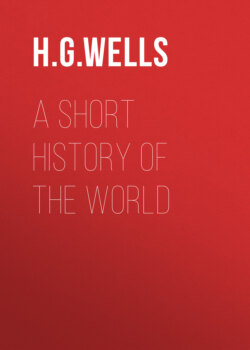Читать книгу A Short History of the World - H. G. Wells - Страница 58
На сайте Литреса книга снята с продажи.
COMPARISON OF (1) MODERN SKULL AND (2) RHODESIAN SKULL
Nat. Hist. Mus.
ОглавлениеThe world was growing liker our own in those days though the climate was still austere. The glaciers of the Ice Age were receding in Europe; the reindeer of France and Spain presently gave way to great herds of horses as grass increased upon the steppes, and the mammoth became more and more rare in southern Europe and finally receded northward altogether. …
We do not know where the True Men first originated. But in the summer of 1921, an extremely interesting skull was found together with pieces of a skeleton at Broken Hill in South Africa, which seems to be a relic of a third sort of man, intermediate in its characteristics between the Neanderthaler and the human being. The brain-case indicates a brain bigger in front and smaller behind than the Neanderthaler’s, and the skull was poised erect upon the backbone in a quite human way. The teeth also and the bones are quite human. But the face must have been ape-like with enormous brow ridges and a ridge along the middle of the skull. The creature was indeed a true man, so to speak, with an ape- like, Neanderthaler face. This Rhodesian Man is evidently still closer to real men than the Neanderthal Man.
This Rhodesian skull is probably only the second of what in the end may prove to be a long list of finds of sub-human species which lived on the earth in the vast interval of time between the beginnings of the Ice Age and the appearance of their common heir, and perhaps their common exterminator, the True Man. The Rhodesian skull itself may not be very ancient. Up to the time of publishing this book there has been no exact determination of its probable age. It may be that this sub-human creature survived in South Africa until quite recent times.
